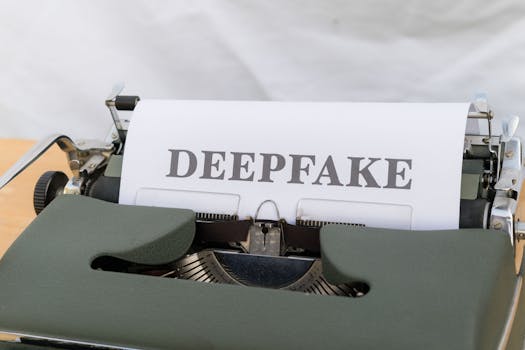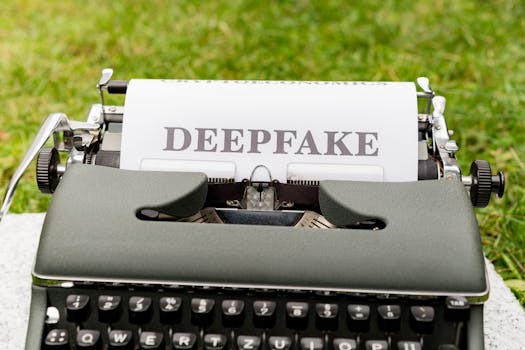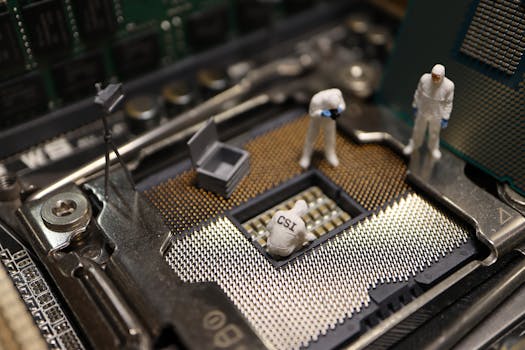Amazing AI Uses in Forensic Medicine Revealed: Unique Applications You Won’t Believe
Introduction
Imagine a world where cold cases crack open with startling speed, where complex DNA mixtures are unraveled in moments, and where the subtle signs of trauma invisible to the human eye are brought into sharp focus. This isn’t science fiction; it’s the rapidly evolving reality of forensic medicine, powered by the incredible advancements in Artificial Intelligence (AI). Have you ever wondered what goes on behind the scenes in a forensic investigation? The stakes are incredibly high, and the pursuit of truth demands every advantage. That’s precisely where AI is making its most profound and often surprising impact. In this blog post, we’re going to pull back the curtain and reveal some of the most amazing AI uses in forensic medicine, exploring its unique applications that are revolutionizing how justice is served.
Section 1 – The AI Revolution in Forensics: More Than Just Sci-Fi
Forensic medicine, at its core, is about applying scientific knowledge to legal questions. It’s a field that thrives on meticulous detail, pattern recognition, and the ability to reconstruct events from fragments of evidence. For decades, this has relied heavily on human expertise, cutting-edge laboratory techniques, and often, sheer persistence. However, the sheer volume and complexity of data generated in modern forensic investigations can be overwhelming, even for the most seasoned professionals.
This is where Artificial Intelligence steps in, not as a replacement for human investigators, but as an incredibly powerful augmentation. AI tools in forensic medicine are designed to process vast datasets, identify subtle patterns, and make predictions that would be virtually impossible for humans to achieve alone. Think of it as giving our brilliant forensic scientists superpowers. These technologies are not just about making processes faster; they are unlocking entirely new ways to interpret evidence and uncover truths that might otherwise remain hidden.

The relevance of AI in forensic medicine today is undeniable. As crime becomes more sophisticated and digital footprints expand, the need for advanced analytical tools grows exponentially. From analyzing microscopic evidence to reconstructing digital timelines, AI is proving to be an indispensable ally in the pursuit of justice. We’ll explore several unique applications that demonstrate just how transformative these AI tools are.
Section 2 – Deep Dive into Unique AI Applications in Forensic Medicine
The versatility of AI in forensic medicine is truly astonishing. While many might associate AI with facial recognition or predictive policing, its applications in this specialized field go much deeper and are far more nuanced. Here are some of the most impactful and unique ways AI is being utilized:
- Advanced DNA Analysis: Traditional DNA analysis is powerful, but AI is taking it to a new level. AI algorithms can now analyze complex DNA mixtures from multiple contributors with greater accuracy than ever before. This is crucial in cases where traditional methods struggle to separate individual profiles. AI can also help in predicting a suspect’s physical characteristics, such as ancestry, eye color, and hair color, directly from DNA samples. This capability significantly narrows down suspect pools, especially in cases with limited leads. The precision and speed offered by these AI tools in DNA interpretation are game-changers.
- Digital Forensics Enhancement: The digital world is a treasure trove of evidence, but it’s also a labyrinth of data. AI-powered tools can sift through vast amounts of digital information – emails, social media posts, smartphone data – to identify crucial connections, timelines, and communication patterns. They can also help in recovering deleted data, identifying deepfakes, and flagging suspicious online activities with remarkable efficiency. Automated data sifting saves investigators countless hours.
- Ballistics and Firearm Analysis: AI algorithms can be trained to recognize unique microscopic striations left by firearms on bullets and cartridge cases. By analyzing these patterns, AI can help link bullets found at crime scenes to specific weapons with higher confidence and speed. This not only helps in identifying the murder weapon but can also connect multiple crime scenes that used the same firearm. The ability of AI to discern subtle striation differences is a significant advantage.
- Post-Mortem Interval (PMI) Estimation: Determining the time of death is a critical but often challenging aspect of forensic investigation. AI models are being developed that analyze a range of factors – including body temperature, insect activity, and even microbial changes within the body – to provide more accurate and reliable estimates of the post-mortem interval. These AI tools can synthesize data from multiple sources, offering a more robust estimation than relying on a single method. This is a truly unique application that addresses a long-standing forensic challenge.
- Radiological Image Analysis: In cases involving skeletal remains or suspected internal injuries, AI can assist radiologists and forensic anthropologists. AI can analyze X-rays, CT scans, and MRI images to identify subtle fractures, anomalies, or patterns of injury that might be missed by the human eye, especially in complex or decomposed remains. This capability is invaluable for reconstructing the events leading to death or injury. AI‘s tireless pattern recognition excels here.
- Taphonomic Analysis: Taphonomy refers to the study of the decomposition process. AI can analyze data related to environmental factors (temperature, humidity, soil type) and the state of the remains to help determine how a body has decomposed and how long it has been exposed to the elements. This helps in understanding the sequence of events after death. Predictive modeling of decomposition is an emerging frontier.
- Crime Scene Reconstruction: By analyzing 3D scans of crime scenes, blood spatter patterns, and bullet trajectories, AI can create highly accurate virtual reconstructions of events. This allows investigators to visualize the scene from multiple angles, test different hypotheses, and gain a better understanding of what transpired. The immersive nature of AI-driven reconstructions provides unparalleled clarity.


These are just a few examples of the innovative ways AI tools are being applied. Each of these unique applications contributes to a more efficient, accurate, and comprehensive forensic investigation.
Section 3 – Real-World Impact: AI in Action
The theoretical potential of AI in forensic medicine is one thing, but seeing it in action is where the true impact becomes clear. While many of these applications are still under development or in early adoption phases, the successes are already being reported.
Consider the challenge of identifying individuals from fragmented or degraded DNA. Traditional methods might struggle to extract a usable profile. However, AI algorithms are being trained on massive databases of genetic information, enabling them to piece together partial genetic fragments and predict familial relationships or even infer physical traits. This has been instrumental in reopening cold cases and identifying previously unknown victims. The ethical considerations surrounding predictive DNA analysis are significant and are being carefully navigated by researchers and legal experts.
Another compelling example comes from the field of digital forensics. Imagine a complex cybercrime where thousands of emails and chat logs are involved. An AI can rapidly scan this data, identifying keywords, sentiment, communication patterns, and potential accomplices far faster than any human team could. This allows investigators to focus their efforts on the most promising leads, dramatically shortening investigation times. For a deeper dive into the complexities of digital evidence, you might find our Understanding Digital Forensics post insightful.
Expert opinion highlights the transformative nature of these advancements. Dr. Anya Sharma, a leading forensic pathologist, notes, “AI isn’t just an efficiency tool; it’s a discovery engine. It allows us to ask questions of our data that we couldn’t even formulate before.” This sentiment is echoed by many in the field who are embracing these new capabilities.
For those interested in the cutting edge of AI research in this domain, the National Institute of Standards and Technology (NIST) often publishes research and standards related to forensic science, including AI applications.
The integration of AI tools forensic medicine unique applications is not just about technological advancement; it’s about delivering justice more effectively and efficiently.
Pros and Cons of AI in Forensic Medicine
While the benefits are clear, it’s important to acknowledge the challenges and limitations.
| Pros | Cons |
|---|---|
| ➕ Increased accuracy and speed in data analysis | ➖ High initial investment in technology and training |
| ➕ Ability to process vast and complex datasets | ➖ Potential for algorithmic bias if not carefully developed and validated |
| ➕ Uncovering subtle patterns invisible to the human eye | ➖ Reliance on the quality and completeness of training data |
| ➕ Reopening cold cases and identifying new leads | ➖ Ethical and legal challenges regarding data privacy and interpretation of AI findings |
| ➕ Enhancing the efficiency and effectiveness of investigations | ➖ Need for robust validation and continuous monitoring of AI performance |
| ➕ Providing objective, data-driven insights | ➖ The “black box” problem: understanding how AI reaches its conclusions can be difficult |
Conclusion
The integration of AI tools into forensic medicine is no longer a futuristic concept; it’s a present-day reality that is profoundly reshaping how we approach criminal investigations and the pursuit of justice. From deciphering complex DNA mixtures to reconstructing crime scenes with unparalleled accuracy, these unique AI applications are empowering forensic scientists with capabilities previously unimaginable.
As we’ve explored, AI offers immense potential for increased accuracy, speed, and the discovery of hidden truths within evidence. While challenges like data bias and ethical considerations exist, ongoing research and responsible implementation are paving the way for a more robust and effective forensic system.
We are living in an exciting era where technology and science converge to serve the cause of justice. The continued exploration and ethical adoption of AI tools in forensic medicine promise a future where fewer crimes go unsolved and the truth is brought to light more reliably than ever before. We encourage you to stay curious about these developments and consider how such innovative technologies are making a difference in our world.